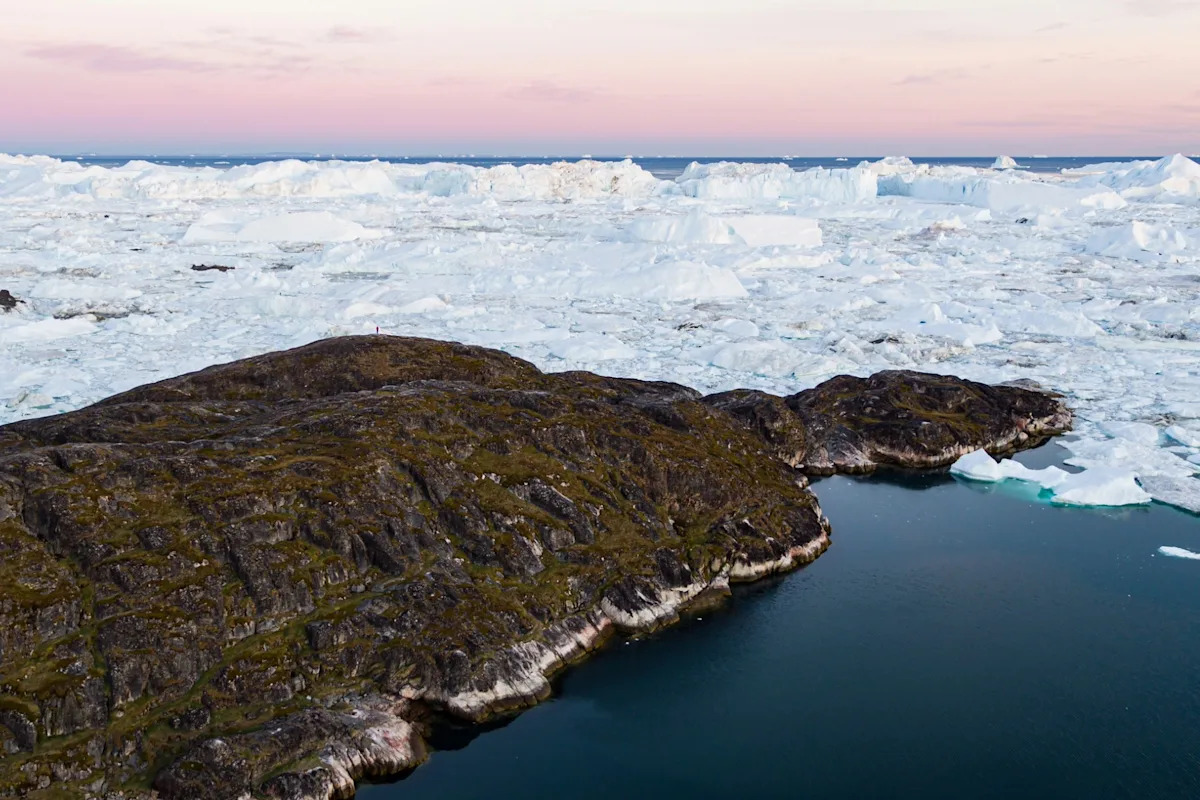With the help of NASA’s advanced supercomputers, a team of researchers took a closer look at the relationship between Greenland’s rapid glacier melt and carbon cycling in nearby coastal waters.
What’s happening?
In a recent study, published in the journal Communications Earth & Environment, scientists examined Sermeq Kujalleq, a glacier experiencing rapid melting.
Aided by supercomputers, the team attempted to determine the impact of glacier meltwater in nearby fjords and how it can influence the marine ecosystems that surround them.
According to the researchers, when glaciers release meltwater into fjords, it’s not the meltwater itself that provides nutrients.
Instead, the meltwater creates powerful plumes that pull nutrient-rich deep water to the surface, where phytoplankton can use the nutrients — particularly nitrate — to grow. This can encourage certain marine species to thrive, though the effects are complex.
Dustin Carroll, oceanographer and co-author of the study, noted that uncertainty was the reasoning behind the study — as Daily Galaxy detailed.
“We were faced with this classic problem of trying to understand a system that is so remote and buried beneath ice. We needed a gem of a computer model to help,” Carroll explained in a NASA report.
Why is increased phytoplankton activity important?
As global temperatures continue to rise, it may become an even more significant factor in the melting of ice sheets. Regions in Greenland and Antarctica have experienced melting at an already accelerated rate, which contributes to rising sea levels and other climate-related changes.
As noted by the researchers, the continued rise of global temperatures is projected to increase glacial melt and runoff by 100 to 300% by the end of the century. This will also increase the likelihood of stronger blooms near glacier fjords.
Michael Wood, a computational oceanographer and co-author of the study, explained that this study is just one aspect of a much larger picture. Daily Galaxy said that the researchers looked to use their simulations more broadly on the Greenland coast and elsewhere.
What’s being done to study the impact of rising global temperatures?
Though glacier meltwater doesn’t feed phytoplankton directly, it does stir up nutrient-rich water that fuels big summer blooms in Greenland’s fjords. This boosts productivity and supports the marine food web but only modestly increases carbon dioxide uptake, according to the study. As the world continues to warm, Arctic marine ecosystems may also be affected.
“Looking to the future, there are several key measurements required to understand ecosystem changes now and in the coming decades,” the study reads. “Additional measurements of nutrient availability are required to constrain model results, especially in coastal regions and fjords, which are hotspots of productivity yet often devoid of biogeochemical measurements.”
While the scope of the team’s research focused on Greenland, its tools and methodology weren’t restricted to a single location. Wood explained that the findings can serve as a blueprint for other regions to determine the impacts of the changing world, which might range from increasing intensity of severe storms to extended droughts.
“We didn’t build these tools for one specific application,” Wood said. “Our approach is applicable to any region, from the Texas Gulf to Alaska. Like a Swiss army knife, we can apply it to lots of different scenarios.”
Join our free newsletter for good news and useful tips, and don’t miss this cool list of easy ways to help yourself while helping the planet.
